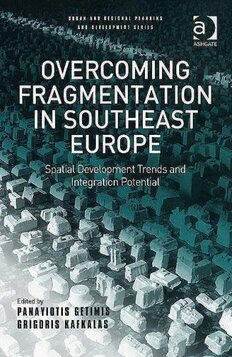
Overcoming Fragmentation in Southeast Europe (Urban and Regional Planning and Development) PDF
354 Pages·2007·11.873 MB·English
Most books are stored in the elastic cloud where traffic is expensive. For this reason, we have a limit on daily download.
Preview Overcoming Fragmentation in Southeast Europe (Urban and Regional Planning and Development)
Description:
With the expansion of the European Union, the countries of Southeast Europe have finally been brought together within one socio-political entity. The restructuring of these economies following globalization and neoliberalization has meant that this region has become much more open to geopolitical shifts and trends.While the various countries have all entered into the slow process of European integration, the historic fragmentation of this region has led to various conflicts and contradictions in the restructuring and transition of national economies. This volume provides a theoretical and comparative overview which examines the prospects for spatial cohesion in this region. With the need to handle persisting problems and conflicts from the past while coping with new economic and political structures, Southeast Europe proves to be a challenging yet fruitful testing ground for how best to overcome fragmentation and establish a long-term process of social and economic integration.
See more
The list of books you might like
Most books are stored in the elastic cloud where traffic is expensive. For this reason, we have a limit on daily download.
